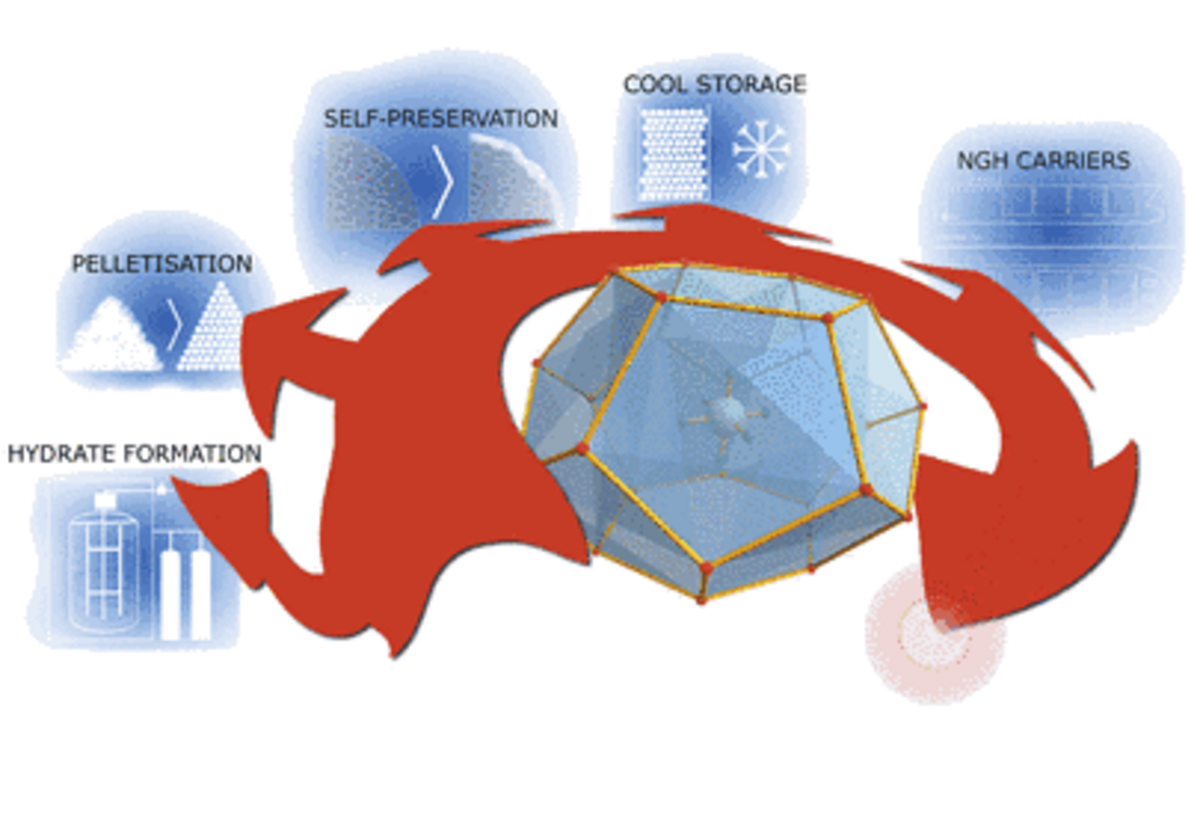Projektleiter B3
Prof. Gregor Rehder
Leibniz- Institut für Ostseeforschung Warnemünde (IOW)
Dr. Robert Eckl
Linde AG, Engineering Division
Gas hydrate transport in pelletized form utilizing the self preservation effect
Natural gas extracted from clathrate deposits offshore needs to be stored and later transported in a reasonably efficient, inexpensive way. We explore a possibility to utilize a clathrate cage structure as a highly efficient storage medium and the phenomenon of so called “self-preservation” for its stabilization. During the decomposition at the ambient pressure and several degrees below the melting point of ice in the “self-preservation” region, clathrate pellets will be coated by an ice film that is able to retard any further transformation from minutes to weeks/months time scale. In this state, gas hydrates would be transported to costal facilities for further processing.
However, up to now the “self-preservation” phenomenon for pure methane and mixed (CH4 + other gases) hydrates is still not sufficiently understood to be applicable on an industrial scale. By various analytical methods, we plan to explore the most suitable p- T- treatment to obtain a satisfactory degree of preservation and stability of produced pellets. Since the “self-preservation” is a fragile state and might be mechanically destroyed during production and transport phases we attempt to reinforce the ice protective coating with polymer additives.
The successful application of a technology for gas storage and transport based on “self-preserved” hydrates is a challenge from the engineering point of view, as a new line of production technologies must be developed. We search for efficient clathrate synthesis (ice + gas / water + gas / water + gas + polymers) and pelletisation techniques that would allow for mass offshore production. “Self-preserved” clathrates require storage containers that would sustain sub-zero temperatures. Finally new NGH cargo ship designs are necessary for safe clathrate transport to coastal processing facilities. Within subproject B3, all steps of the NGH transport chain are addressed and the competiveness with respect to established gas transport schemes is evaluated.

| Author | Title | Year | Journal/Proceedings | Reftype | DOI/URL |
|---|---|---|---|---|---|
| Circone, S., Stern, L.A. & Kirby, S.H. | The effect of elevated methane pressure on methane hydrate dissociation [Abstract] [BibTeX] | 2004 | American Mineralogist Vol. 89(8-9), pp. 1192-1201 | article | |
| Kuhs, W.F., Genov, G., Staykova, D.K. & Hansen, T. | Ice perfection and onset of anomalous preservation of gas hydrates [Abstract] [BibTeX] | 2004 | Physical Chemistry Chemical Physics Vol. 6(21), pp. 4917-4920 | article | DOI |
| Sloan, E.D.J. & Koh, C. | Clathrate hydrates of natural gases [Abstract] [BibTeX] | 2008 | , pp. 537-628 | inbook | URL |
| Stern, L.A., Circone, S., Kirby, S.H. & Durham, W.B. | Temperature, pressure, and compositional effects on anomalous or "self" preservation of gas hydrates [Abstract] [BibTeX] | 2003 | Canadian Journal of Physics Vol. 81(1-2), pp. 271-283 | article | DOI |
| Stern, L.A., Circone, S., Kirby, S.H. & Durham, W.B. | Anomalous preservation of pure methane hydrate at 1 atm [Abstract] [BibTeX] | 2001 | Journal of Physical Chemistry B Vol. 105(9), pp. 1756-1762 | article | DOI |
| Takeya, S., Ebinuma, T., Uchida, T., Nagao, J. & Narita, H. | Self-preservation effect and dissociation rates of CH4 hydrate [Abstract] [BibTeX] | 2002 | Journal of Crystal Growth Vol. 237, pp. 379-382 | article | |
| Takeya, S., Uchida, T., Nagao, J., Ohmura, R., Shimada, W., Kamata, Y., Ebinuma, T. & Narita, H. | Particle size effect of CH4 hydrate for self-preservation [Abstract] [BibTeX] | 2005 | Chemical Engineering Science Vol. 60(5), pp. 1383-1387 | article | DOI |
| Tooru, I., Masahiro, T., Yuichi, K., Kiyoshi, H. & Uchida, K. | Research on Self-preservation of Natural Gas Hydrate Pellet (NGHP) [Abstract] [BibTeX] | 2006 | Mitsui Zosen Technical Review(187), pp. 15-21 | article | URL |
| Yakushev, V. & VA, I. | Gas-Hydrates Self-Preservation Effect [BibTeX] | 1992 | Physics and Chemistry of Ice, pp. 136-139 | inproceedings |

